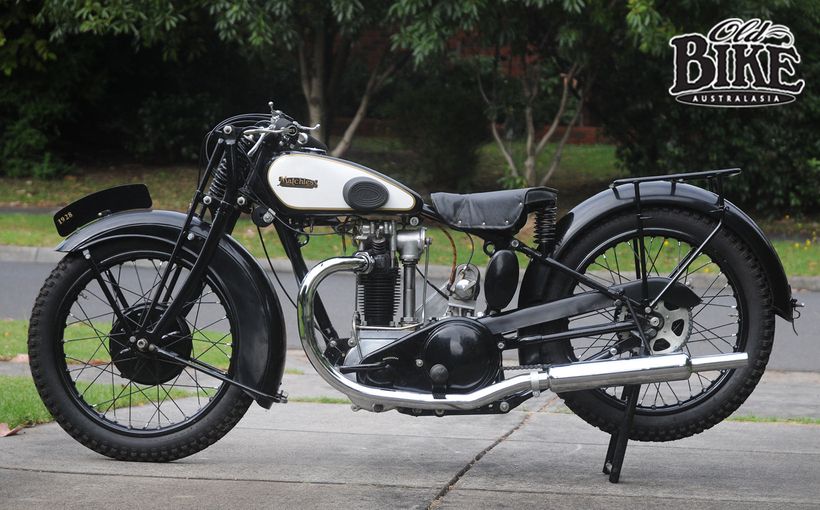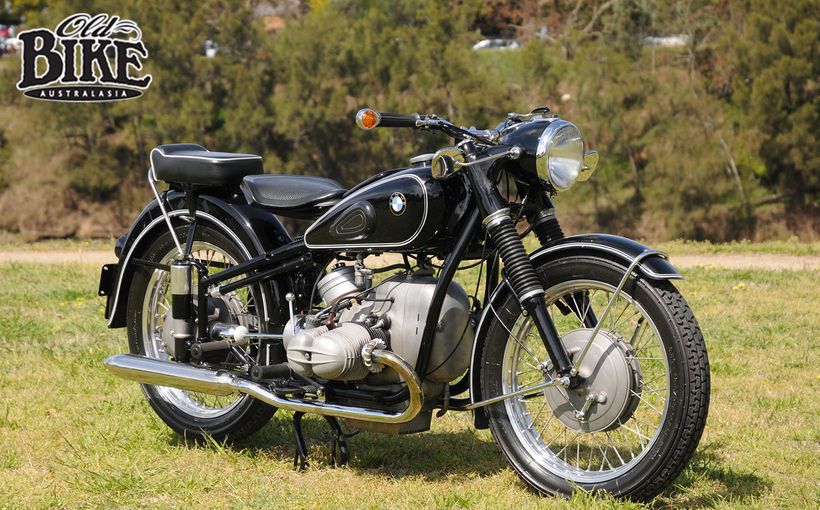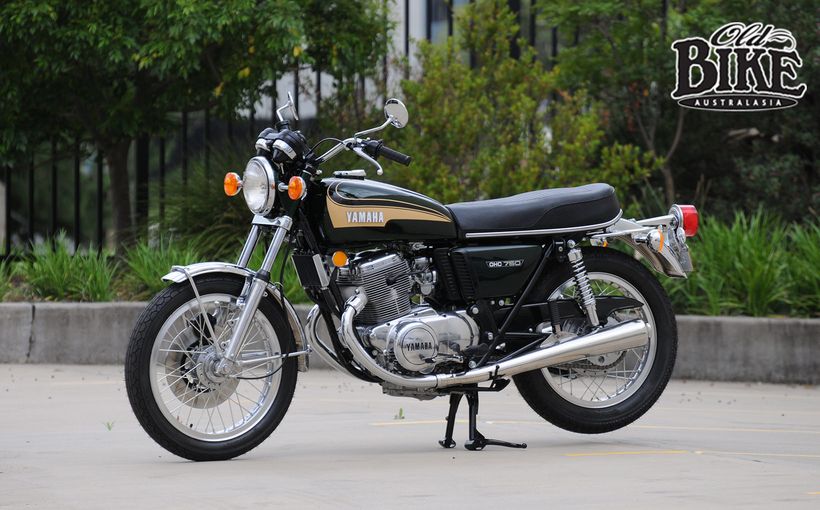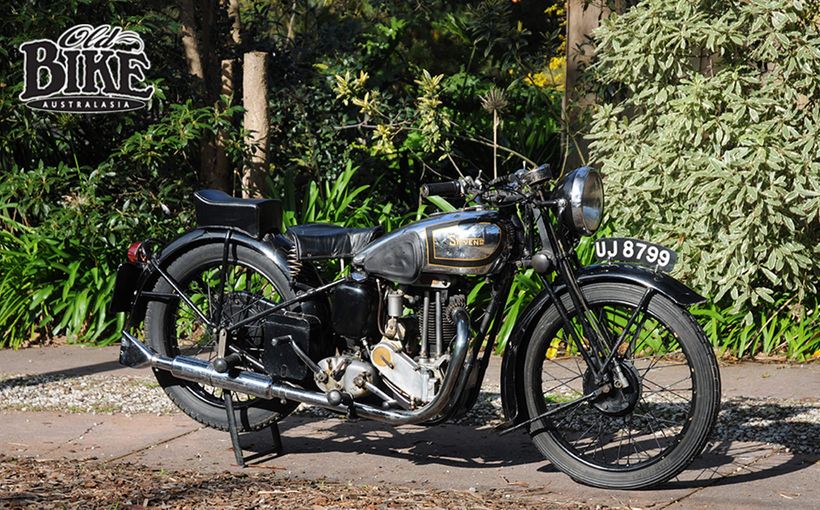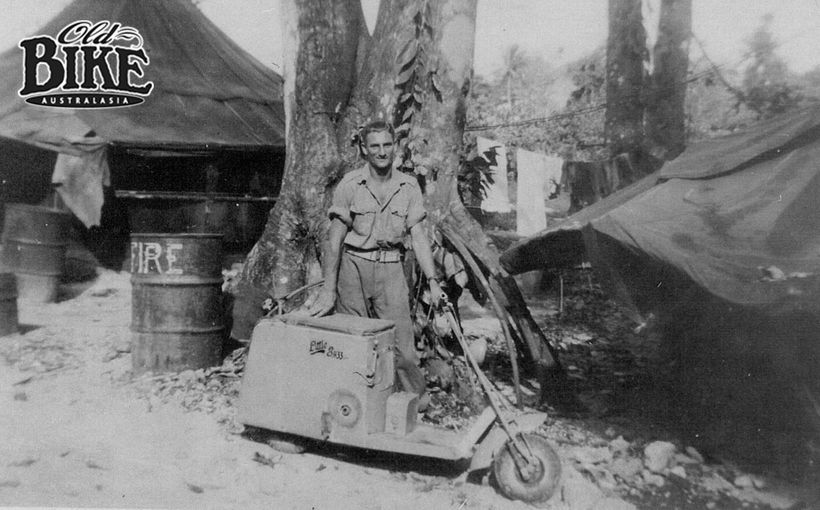Old Bike Australiasia: Z1 Kawasaki - New York Steak Well done

The specification seems straightforward enough today – four cylinder double overhead camshaft, but in production terms, it was a quantum leap for the times, and encompassed technology that would allow the machine to conform to emission laws that were yet to be devised. Valve seats were in sintered alloy to cope with unleaded fuel, and a sophisticated crankcase ventilation system (called PCV for Positive Crankcase Ventilation by Kawasaki) where unburned gas and mixture that had escaped from top to bottom end was re-circulated to the combustion chamber – a system claimed to reduce hydrocarbon emissions by 40 per cent. 82 bhp at 8,500 rpm was the claim, and it felt like every pony was pulling its weight, as the 230 kg Z1 would swallow a standing quarter mile in 12 seconds with a top speed exceeding 200 km/h. The massively constructed bottom end employed a crankshaft pressed together from nine separate pieces, with needle-roller bearings for the shaft and big ends.
Significant as these achievements were, it was the Z1’s performance that sent buyers scurrying to dealerships – the $1845 asking price pitched directly at the market-leading Honda CB750. Indeed, the Honda had almost torpedoed the Z1 in the womb, because while the Kawasaki engineers, under the control of Gyoichi ‘Ben’ Inamura, were quietly working away on their baby (code named NYS for ‘New York Steak’), the CB750 was launched to rapturous applause at the October 1968 Tokyo Motor Cycle Show. Honda had kept the existence of their stunning new four a closely-guarded secret, and the CB750’s public bow fairly knocked the wind out of Kawasaki’s sails. Company bosses even ordered work to stop on the Z1 project until market reaction to the Honda could be evaluated, but such was the instant acceptance that the postponement was short-lived. In effect, Honda had created a new market, giving Kawasaki a big confidence boost to complete their own machine as soon as possible. In its initial form, the Z1 was designed as a 750, but after Honda’s poolscoop, it was rightly felt that the Z1 needed a power edge and the internal dimensions were re-drawn.
A complete wooden mock-up was built in September 1968. The first complete prototype ventured onto the massive high-banked 8.12 km Yatabe Test Track outside Tokyo (demolished in 2005 and subsequently cleared to allow a new rail express line to bisect the venue) in mid-1970, using factory rider Arihiko Kiyohara and two American test riders. Testing proved the concept had transferred from drawing board to metal exactly as anticipated, and the 15 hp advantage over the CB750 would prove a major selling point. Testing continued into the (Japanese) spring of 1970 using bikes with various modifications; one developing 95 hp was clocked at 228 km/h at Yatabe. Now code named T103, the Z1 was quickly readied for production, with a small number completed and ready for testing in February 1972 – both in Japan and in the USA. Two bikes were sent to America and flogged for 950 km per day at an average speed of 128 km/h – disguised to look like Honda CB750s, even to the point of having Honda badges on the tanks. To prove the point, the two test bikes were ridden west-east across the country, from Los Angles to Daytona, then back again – a total distance of 20,150 km with only the rear chains replaced. The bikes were then sent back to Japan for evaluation, re-fettled and returned to the USA, where factory riders Paul Smart and Yvon Duhamel were given the task of track testing.
At the Japanese tests, Kawasaki must have been confident that the Z1 would breeze through these incredibly rigorous routines because they flew in not just a crack team of riders, but major dealers and distributors from several countries, including Australia. At the conclusion of the trials each machine was completely dismantled and checked for defects, and a few minor modifications were made to the initial production run, but in general the original design performed almost faultlessly. Initial production was set at an achievable 1,500 units per month, but this was gradually increased to a peak of 3,660 Z1Bs in November 1974.
To reduce the transference of vibration, extensive use of rubber mounting was made, for the headlamp, instruments, side covers, footrests, mufflers and under the fuel tank where it straddles the duplex frame. Full scale production began in August 1972 and the Z1 made its public debut at the prestigious Cologne Motorcycle Show in Germany in October, followed by similar shows in Paris and in Norway. Journalists who sampled the first Z1s praised it universally, with the inevitable comparison to the CB750 confirming that the Kawasaki was indeed a formidable competitor. While the extra power was appreciated, most claimed the main advantage was in better handling and braking, and not a few liked the lower seat height. The automatic rear chain oiler was another feature that drew mixed response.
Some however, expressed reservations that the Z1 could be dangerous in inexperienced hands, prompting Kawasaki Motorcycles General manager Mr Yamada to issue a statement saying, “ We created the Kawasaki 900 Super-4 for experienced riders who want to move up to a bigger, stronger and far safer motorcycle. The Kawasaki 900 Super-4 represents a new high in the state of the art of building better motorcycles that are safe to ride at any speed, reduce air and noise pollution, and are easy to service…It combines super sports power and acceleration with grand touring capability and comfort. We are confident that the men who will buy this motorcycle will respect the power potential and use it judiciously as a safety factor. The Kawasaki 900 Super-4 is an expression of confidence in the future of high performance motorcycles – and expresses Kawasaki’s confidence in their owners who will use them with commonsense and courtesy.”
One area where the Z1 received universal acclaim was in styling. The flowing lines gave the Z1 and appearance of extended wheelbase, which, at 1490 mm, was not really the case. The black-finished engine with polished highlights was certainly impressive, but not universally appreciated however was the brown and orange colour scheme offered to several markets, including Australia. In Europe, a dark metallic green with yellow panels was available. To comply with local regulations, a 746 cc version was produced for the Japanese market; the Z2, which developed 69 bhp and quickly became a top seller.

Early road testing of production models revealed Kawasaki had been rather modest in its claims, for a top speed of 132 mph (212.5 km/h) was achieved by one British journal – the fastest bike they had ever tested. Following the 1973 Daytona 200, a team of riders on Z1s set up numerous speed and endurance records, including a new 1,000 cc 24 hour mark at an average speed of 109.641 mph (176 km/h). One prominent British journalist however claimed to have experienced a frightening wobble as the Z1 reached top speed. This was subsequently blamed on the British-made Dunlop K81 tyres which had been substituted for the Japanese Dunlop Gold Seal originals. Once the ribbed front tyre was refitted, the weaving tendency was reduced, but not eliminated. Fitting the flatter handlebars favoured by the English also helped cure the problem, but the handling was generally accepted to be the weak point of the whole package. Some put this down to the low seat height which gave an unduly light feeling to the steering, others to inferior damping on the rear shocks. Koni rear units became a favoured modification.

With Production Racing all the rage in Australia and New Zealand, the Z1 was seen as the next big thing for the race tracks. Throughout the 1973 season the Z1 racked up dozens of wins and was seen as a sure-thing for the prestigious Castrol Six Hour Race. This was confirmed when Kenny Blake turned in an heroic solo performance to win, but to do it he had to overcome another Kawasaki, a H2 two-stroke triple ridden by Warren Willing and John Boote, with the latter’s thirst for fuel being the deciding factor. Blake (this time teamed with Len Atlee) won again the following year, Gregg Hansford and Murray Sayle in 1975, and Roger Heyes and Jim Budd in 1976 – giving the Z1 four wins in succession.
The Z1 in its original form remained in production until August 1973, when the Z1A appeared as the 1974 model. Gone was the black-painted engine and in its place a polished aluminium finish – a not universally popular move. The tank and rear seat shroud now featured different striping but the basic colours were the same as the Z1. Slightly larger tank badges also distinguished the model. There were very little mechanical changes to the Z1A with the exception of larger chain adjuster bolts and an indicator for the rear brake. A twin-disc kit was also now available. Halfway through the Z1A production run, the carburettors and the ignition advance unit were changed to give a smoother ride.

One year later came the Z1B, featuring completely new colour schemes of Candy Red and Candy Blue, both with gold and white stripes. The chain oiler was gone – replaced by an O-ring chain and the traditional Double Overhead Camshaft badges for the sidecovers were now simply ‘Z900’. Low-rise handlebars were offered as an option. The model for 1976 was known as the Z900 (or A4) and the major change mechanically was the use of smaller 26 mm carburettors, replacing the 28 mm jobs used on the first three models. This was claimed to be in the interests of more flexibility and torque, but the result was a bike that was slower overall, a point not lost on the Production Racing set which continued to rely on the Z1B. As well as having less power, the Z900 was also heavier, due in part to a frame constructed of thicker-walled tubing that was supposed to reduce flexing. Diamond Dark Green and Diamond Brown were the two colour options. Initially the A4 was produced only in Japan, but later versions for the US market were produced in Lincoln, Nebraska. About 3,000 ‘chopper’ versions known as the KZ900-LTD were produced in Nebraska for the US market only. These had a smaller fuel tank, rear disc, cast alloy wheel (with a 16-inch rear), twin exhaust pipes and a stepped seat.
The Z900 signalled the end of the line for the original 903 cc engine after more than 130,000 units were produced between 1972 and 1976. In 1977, the new 1015 cc Z1000 was unveiled. The increase in capacity was achieved by increasing the bore size from 66 mm to 70 mm, and although the 26 mm carburettors were retained, the bigger capacity resulted in increased power output. The Z1000 also marked the end of the four-pipe style.
Mainly due to the proliferation of models by now on the market, the 1000-series never achieved the popularity, nor the fame, of the 900s. Today the Zeds produced between 1972 and 1976 are highly collectable and rightly so. It may be forty years since the Z1 first appeared, but it is correctly regarded as a milestone in motorcycle design – a bike that can be ridden and enjoyed today, one that is virtually bullet-proof and simple to maintain, an indisputably handsome devil, and an asset to any collection.
Zeds in the shed.
Clyde Ikin is a devotee of the Z1 – he owns three, a part-finished Z1A, a Z1B that is used regularly, and the concours Z1 in the European Candy Yellow/Green colour scheme that is featured here. The bike came to him as a basket case in 2004, and there were times when he wondered if it was worth restoring at all. “When I went to buy it I found it was an Australian delivered Z1 chassis, but with a Z1000 engine. It turned out that the gearbox had packed up on the original engine, so Z1000 crankcases and bottom end were substituted with a Z1 top end. The engine and frame numbers are not identical (on the 900 series) but I got a set of crankcases from New York that were very close. I already had a lot of Z1 engine parts so that wasn’t really a problem, although there were times when I wondered if I should just dismantle it and sell off the parts.”

Luckily, he didn’t, because the result of Clyde’s labour is a stunning motorcycle. Visually, Clyde’s Z1 stands out with the yellow and green décor – a decision he took ‘just to be different’. “The green colour was sold in Europe and Canada, and there were a very small number imported here as well.” The rebuild did not produce any major surprises; the Z1 series is remarkably well supplied with replica parts and there is even a reasonably abundant supply of new original parts from Kawasaki. “The most documented problem with the model is the voltage regulator”, he says. “Kawasaki changed that four or five times during the life of the 900 and even the Z1000. It took them about six years to get a decent regulator. The regulators would go to open circuit and stop regulating. You’d blow all the instrument lights and often boil the battery. I know at least three people who have had batteries destroyed. When I bought my Z1B the first thing I did was check the voltage and it was 19 volts. They have a rectifier that turns it from AC to DC, then a separate regulator to control the voltage. Now you can buy a combined unit that is far superior. On the 900s, a lot of the parts are date-stamped; switchgear, brakes, swinging arm, rear brake torque arm, and the discs. When I bought the Z1 I didn’t know a lot of this but I have gradually changed parts for the correct ones. I refurbished the original handlebar switches, then changed the front disc over (for the correct year model) which with a new set of pads now works really well and doesn’t squeal.”
Most enthusiasts regard the first three models – Z1, Z1A and Z1B – as being the most collectable, and Clyde sheds some light on this. “The Z900 had a substantially different frame, the front end was different, and the battery was carried lower in the frame as a result of a new, quieter air box. It was the first model sold here (but not in USA) with twin discs, which were smaller diameter and thinner, and although the engine is basically the same it had smaller (26 mm) carburettors and a restricted exhaust – which is why all the Production racers stuck with the Z1B.
The Z1000 also had the 26 mm carbs, but the Z1R went back to 28 mm. These were a better carb, better jetted and easier to adjust, than those used on the early Z1s but top-end performance suffered slightly as a result of the smaller carb.”
Although pristine, Clyde’s bikes are ridden regularly. “I prefer the Z1B – no particular reason but for one thing it is easier to keep clean. The black engine on the Z1 can take days to clean. Halfway through the Z1A production they changed the carbs and the ignition timing and it smoothed out the power delivery quite a bit. By that time they had gone away from things like the hollow camshafts on the Z1, but that would have been for reasons of costs. Fitting Ikon shocks and Z1R carbs to my Z1B has made a big difference to the riding.”
To celebrate the 40-year milestone, Clyde plans to complete his Z1A which will then give him a complete set of the Z1 series, which have as shedmates some other beautifully restored fellows like his Honda CB750F1 – a much underrated bike he reckons – and possibly the basis for another story in OBA to celebrate its 40th birthday in 2015.

Protect your kawasaki. Call Shannons Insurance on 13 46 46 to get a quote today.




